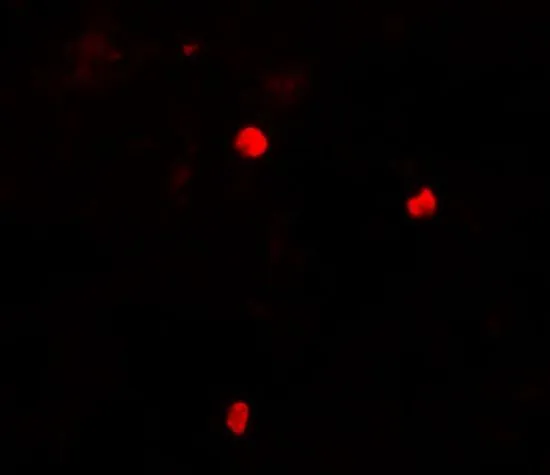
IHC-P analysis of human lung tissue using GTX31864 KEAP1 antibody. Working concentration : 20 microg/ml
KEAP1 antibody
GTX31864
ApplicationsWestern Blot, ELISA, ImmunoHistoChemistry, ImmunoHistoChemistry Paraffin
Product group Antibodies
TargetKEAP1
Overview
- SupplierGeneTex
- Product NameKEAP1 antibody - KO/KD Validated
- Delivery Days Customer9
- Application Supplier NoteWB: 1 - 2 microg/mL. *Optimal dilutions/concentrations should be determined by the researcher.Not tested in other applications.
- ApplicationsWestern Blot, ELISA, ImmunoHistoChemistry, ImmunoHistoChemistry Paraffin
- CertificationResearch Use Only
- ClonalityPolyclonal
- Concentration1 mg/ml
- ConjugateUnconjugated
- Gene ID9817
- Target nameKEAP1
- Target descriptionkelch like ECH associated protein 1
- Target synonymsINrf2, KLHL19, kelch-like ECH-associated protein 1, KEAP1 delta C, cytosolic inhibitor of Nrf2, kelch-like family member 19, kelch-like protein 19
- HostRabbit
- IsotypeIgG
- Protein IDQ14145
- Protein NameKelch-like ECH-associated protein 1
- Scientific DescriptionThis gene encodes a protein containing KELCH-1 like domains, as well as a BTB/POZ domain. Kelch-like ECH-associated protein 1 interacts with NF-E2-related factor 2 in a redox-sensitive manner and the dissociation of the proteins in the cytoplasm is followed by transportation of NF-E2-related factor 2 to the nucleus. This interaction results in the expression of the catalytic subunit of gamma-glutamylcysteine synthetase. Two alternatively spliced transcript variants encoding the same isoform have been found for this gene. [provided by RefSeq, Jul 2008]
- Storage Instruction-20°C or -80°C,2°C to 8°C
- UNSPSC12352203
References
- TGF-beta1 signaling protects retinal ganglion cells from oxidative stress via modulation of the HO-1/Nrf2 pathway. Chen HY et al., 2020 Nov 1, Chem Biol InteractRead more
- Attenuation of Lipopolysaccharide-Induced Acute Lung Injury by Hispolon in Mice, Through Regulating the TLR4/PI3K/Akt/mTOR and Keap1/Nrf2/HO-1 Pathways, and Suppressing Oxidative Stress-Mediated ER Stress-Induced Apoptosis and Autophagy. Huang CY et al., 2020 Jun 10, NutrientsRead more

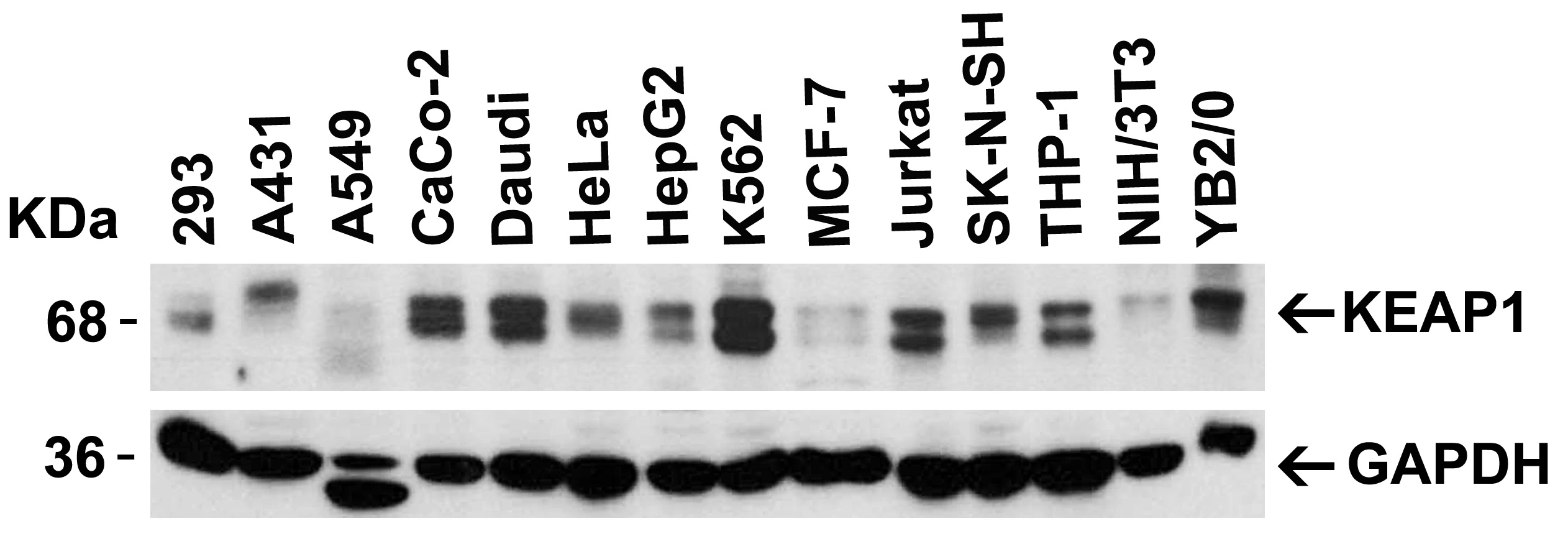
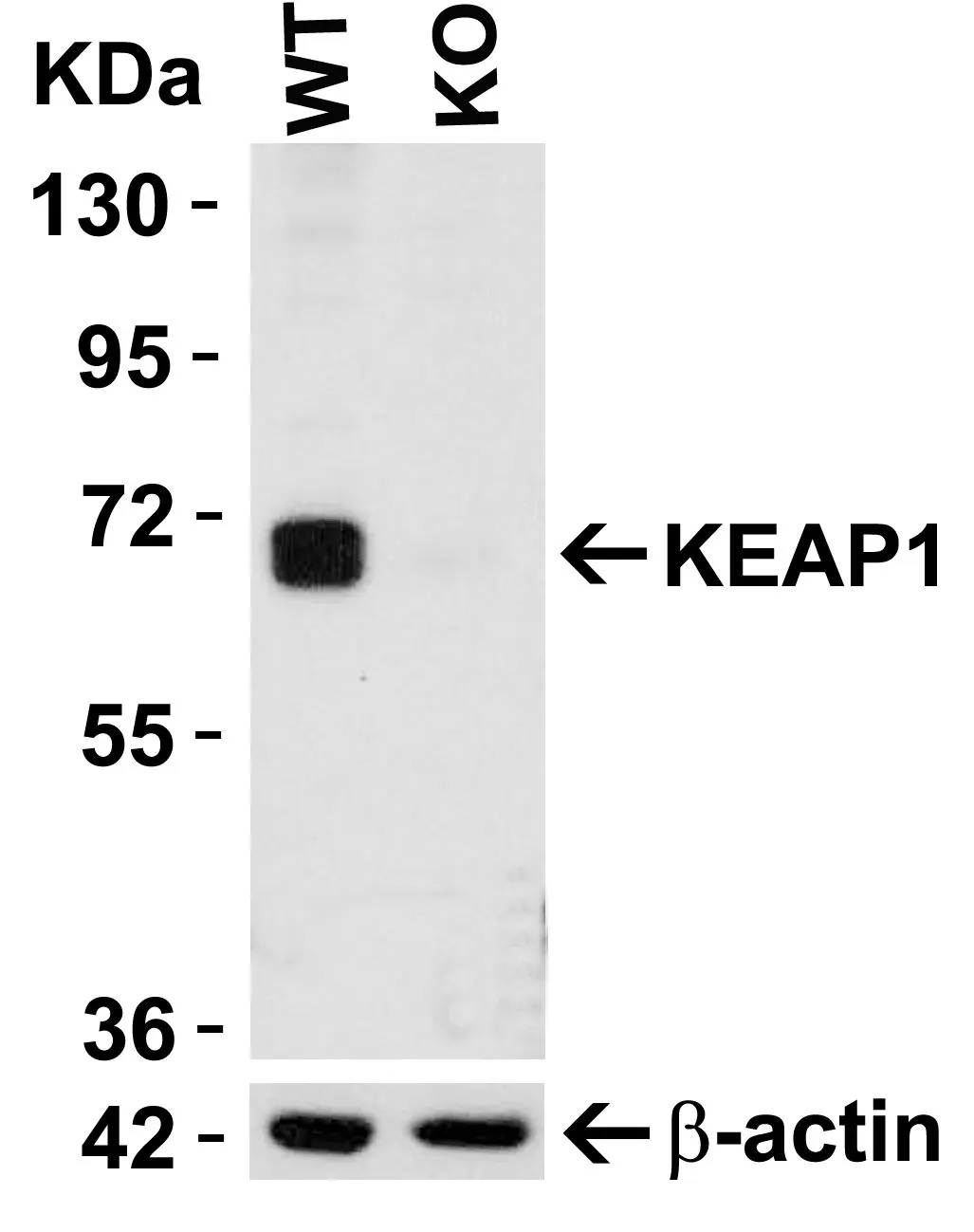
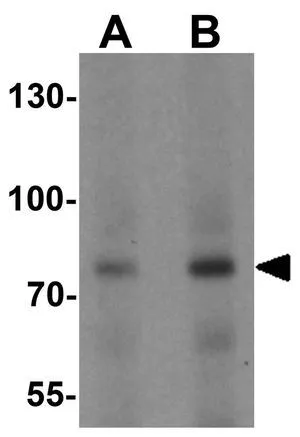

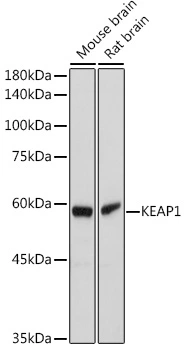
![ELISA analysis of antigen using GTX60660 KEAP1 antibody [1F10B6]. Black : Control antigen 100ng Purple : Antigen 10ng Blue : Antigen 50ng Red : Antigen 100ng](https://www.genetex.com/upload/website/prouct_img/normal/GTX60660/GTX60660_20170912_ELISA_w_23061123_339.webp)
![ELISA analysis of antigen using GTX60664 KEAP1 antibody [7G4B10]. Black : Control antigen 100ng Purple : Antigen 10ng Blue : Antigen 50ng Red : Antigen 100ng](https://www.genetex.com/upload/website/prouct_img/normal/GTX60664/GTX60664_20170912_ELISA_w_23061123_416.webp)

